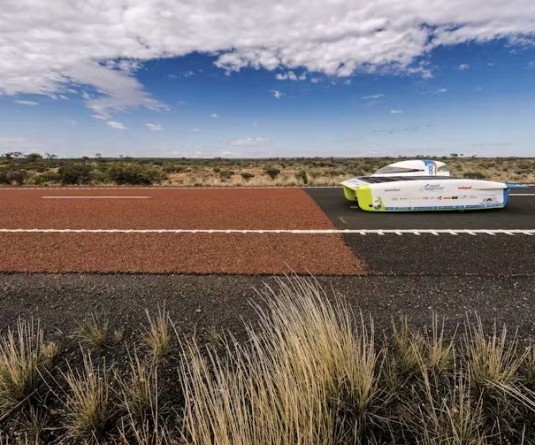
Cycling has always been a global activity, and in the 21st century a marketing phenomenon. At its simplest, the bicycle is a functional form of transport that was invented sometime in the early 19th century, although attribution to a single inventor is not possible as there appear to have been a number of prototypes developed throughout Europe. However, for many, cycling is a sport first and a mode of transport second. The Tour de France, the most famous and prestigious bike race, began in 1903 as a marketing promotion for the French magazine L’Auto, and in its present form consists of some 200 of the best cyclists racing across 21 stages and covering well over 2,000 miles. Perhaps the most famous country for bicycles as everyday transport is China, once reported to have as many as 9 million cycles on the road. But as affluence and car ownership doubled, bicycle ownership declined dramatically, by as much as 35% between 1995 and 2005. Bicycles were also blamed for congestion and road accidents with Shanghai actually banning them from some roads in 2004. But just like a cycle wheel, what goes round comes round and since 2011, as air quality has deteriorated and traffic jams are a daily nightmare for Chinese commuters, the bicycle has been brought back into favour with bike share programmes. Another place renowned for bicycles is Amsterdam, a town designated by its cycle routes and when crossing the road you need to be very aware of both the bike and vehicle traffic. Amsterdam is completely flat and with 4,000 kilometres of bike paths it should be a cyclists dream, but you have to know how to cycle like a Dutch person and never leave your bike unlocked (55,000 cycles go missing every year).. Another bike-friendly city is Copenhagen, where most inhabitants bike to work; half of Danish households don’t own a car. Back in the 19th-century bikes were considered so good for Danish society that cycling unions developed with political goals. Although, like other western cities, the introduction of the car led to a reduction in cycling, in the early 1960s Copenhagen began reducing city centre traffic converting the main Street Stroget in 1962 to a pedestrian promenade. The energy crisis of the 1970s hit Denmark hard and car-free Sundays were introduced to save fuel. People also protested by painting white crosses on roads where cyclists had been killed, and with such pressure the cycle track network was rebuilt in the 1980s and expanded as fatalities and injuries fell. We've always taken the greenness of bike transport as a given. But if one is just getting started, here are reasons to leave car in the driveway and start covering pavement on two wheels. It's easier to finance a new bicycle than a new car. For the price of a single car payment, one can buy a well-made bicycle that should outlast most cars. Add a few hundred rupees more for rain gear, lights and accessories, and you have all-weather, anytime transportation. A bicycle has a tiny manufacturing footprint when compared to a car. All manufactured goods have an environmental impact, but bicycles can be produced for a fraction of the materials, energy and shipping costs of a car. Bicycles produce no meaningful pollution when in operation. Bikes don't have tailpipes belching poisonous fumes into the atmosphere. They also do not eliminate the oil, fuel and hydraulic fluids dripped by automobiles onto the road surface — which means less toxic runoff into local waterways. Bicycles provide mobility for those who may not qualify or afford to drive. Not everyone can get a driver's license (or wants one), and the cost of purchasing, insuring and maintaining a car is out of reach for a lot of people. Almost everyone can afford some sort of bike. Other than walking, bicycles are the most cost-effective transportation on the planet. Studies show that bicycle commuters are healthier, more productive, and require less time off at work. This is why most enlightened employers are eager to accommodate commuting cyclists. Healthy workers are better workers — and that's good for the bottom line. Bikes are smart business. Chances for cities to become safer and better places to live in will follow when one adopts this mode of transportation. The growth of car use and the subsequent perceived problem of congestion, particularly during peak hour travel causes financial loss and negatively affects residents who live in the central areas. One of the solutions is to invest in a network of cycling infrastructure with strong government support to create priority for cyclists and to provide a safe, comfortable and attractive network that integrates with a spatial policy. The Dutch have followed a spatial policy promoting a compact building style offering mixed use that reduces travel distance, which can be easily made by bicycle. However, to be safe and convenient to use, government policies must, at least, treat cyclists on an equal footing to car users, public transport users, and walkers. If the spatial policy can make the car less necessary and convenient to use, government financial policy can reinforce this through car taxation and tangible restrictions associated with owning a car and using it. They could change the legal system so that there is an insurance bias to protect vulnerable road users. At the local level, promotion of cycling must involve more than physical infrastructure, it must also integrate across policy delivery areas including spatial planning, transport, health and education.
Degree of Thought is a weekly community column initiated by Tetso College in partnership with The Morung Express. Degree of Thought will delve into the social, cultural, political and educational issues around us. The views expressed here do not reflect the opinion of the institution. Tetso College is a NAAC Accredited UGC recognised Commerce and Arts College. The editors are Dr Hewasa Lorin, Nungchim Christopher, Seyiesilie Vupru, Vikono Krose and Kvulo Lorin. Portrait photographer: Rhilo Mero. For feedback or comments please email: dot@tetsocollege.org.





